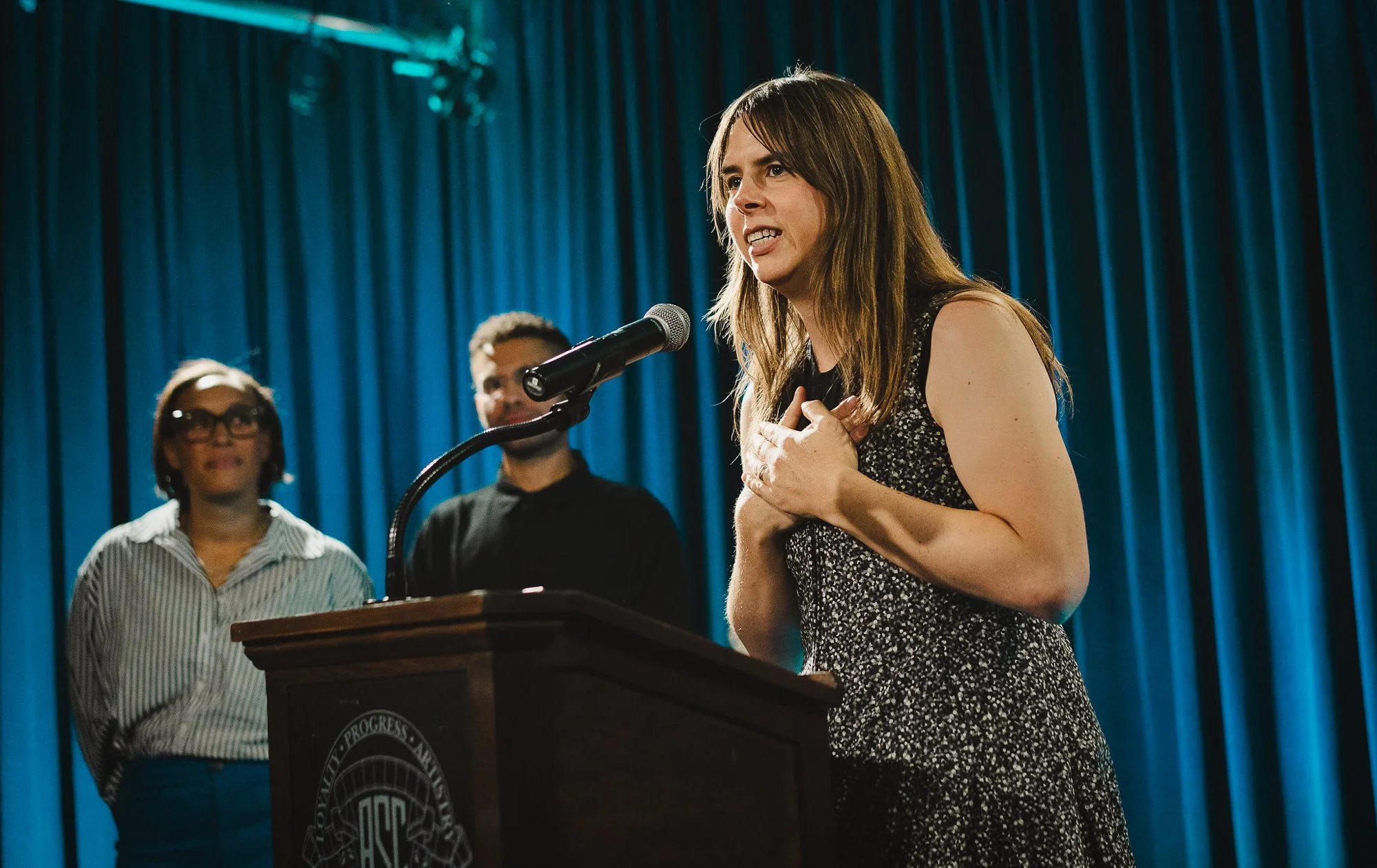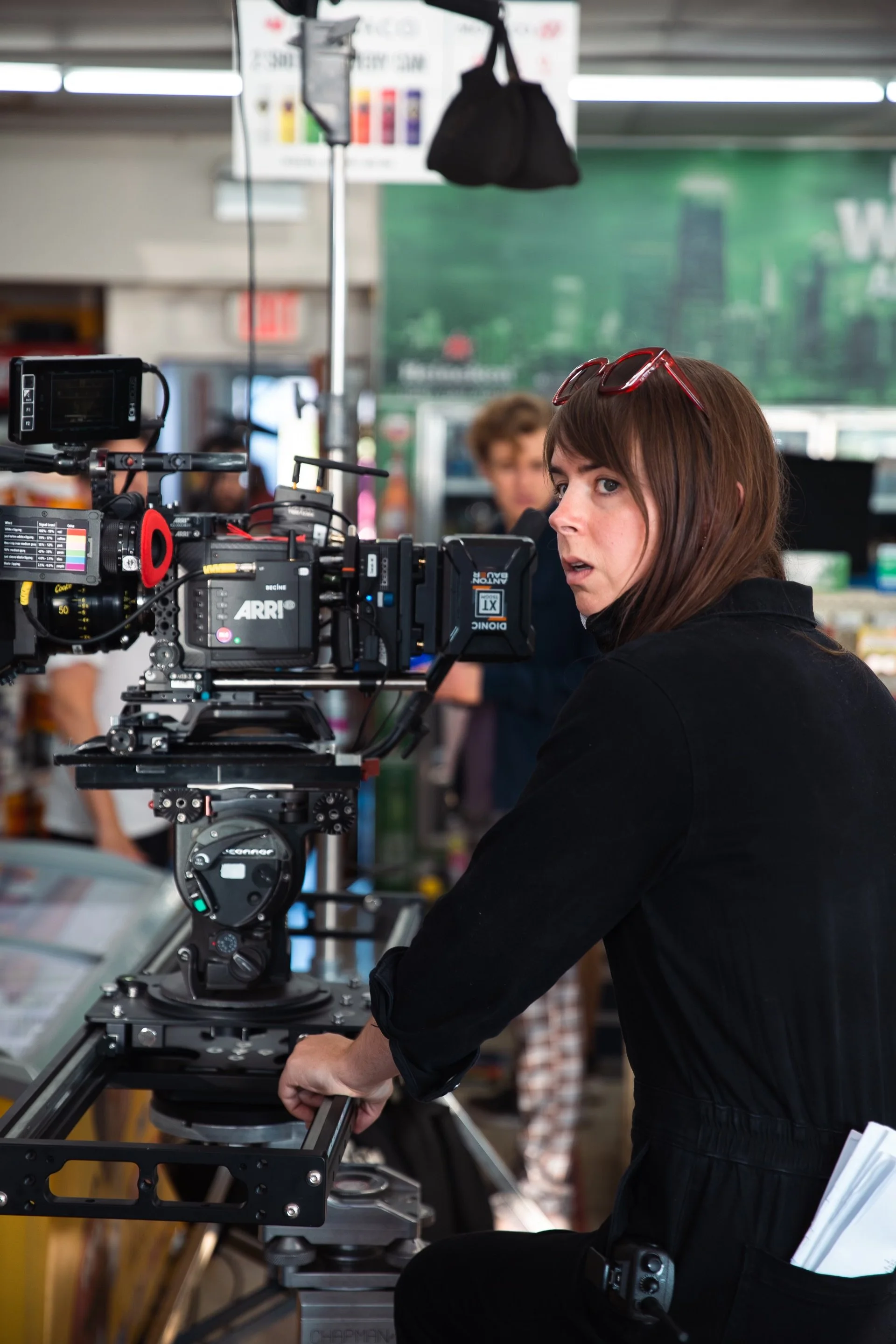Every cinematographer has a toolkit. For Sarah Whelden, it isn’t just lenses or light meters - it’s a compass.
Years ago, she built a five-point checklist to help her decide whether to take on a project: the creative, the heart, the people, the money, and the chance to learn. “I read a script and ask myself, does this excite me? Do I believe the world is better if this film exists? Can I grow here?” Whelden explains. “It’s not that every project has to hit all five, but if it hits three, then it’s probably worth doing.” That compass has carried her from Portland’s indie sets to Los Angeles soundstages, guiding choices that have helped shape her impressive portfolio of films.
It’s no accident that one of her favourite film anecdotes comes from Monty Python and the Holy Grail, where the production team, unable to afford horses, turned to coconuts to create the sound of galloping. The workaround became one of the film’s most memorable jokes and proof that sometimes limitation unlocks brilliance. Whelden has built her career on that same principle. Whether finding a dolly substitute on a short film with no budget, or embracing the impossible by shooting an entire feature in a single take, she thrives on constraints.
Now recognised within The American Society of Cinematographer’s (ASC) 2025 list of Rising Stars of Cinematography and taking first place at Women in Media’s annual Altitude Awards, Whelden stands at a crossroads familiar to many independent DPs: balancing the resourcefulness forged in tiny crews with the demands of larger productions.
Being named a ASC Rising Star is an acknowledgement from one of the most respected institutions in cinematography that someone is excelling technically while shaping the future of the craft. Whelden’s work has caught the attention of peers and mentors at the highest level. The honour is a reminder that the compass she built years ago is pointing her toward a place at the table among the voices redefining cinema.
I had the privilege of talking to Sarah last week, and what struck me most was the mix of pragmatism and wonder in the way she describes her path. After the 2008 financial crash, she found herself in Portland, making ice cream to pay the bills, when she realised that if work was going to consume most of her time, it might as well be creative. She gravitated toward film, not knowing whether it would mean shooting wedding videos or commercials - only that it would be different every day.
What she didn’t expect was how quickly the work consumed her. Editing came first, but the solitude of the computer wasn’t a fit. Once she picked up a camera, the pieces clicked. “As soon as I started doing it, I loved it more than anything in the world,” she told me. By 2015, she was working full-time as a freelance cinematographer, figuring things out as she went, often on her own terms.
Those early years in Portland shaped her voice. Surrounded by DPs who had to make tight commercial budgets stretch, she absorbed a mindset of resourcefulness. No expensive crane? Find a dolly with an extension arm. Not enough crew? Reimagine the shot so it can be done safely with three people. It was problem-solving as art; she viewed constraints as opportunities.
“And so I sat with the director - we’d meet every day for two or three hours in the evening at this quiet bar. We’d sit there and just talk through the script, read it again and again, and work through it together. Then we shot it, and it was absolutely wild. There were a lot of things I learned and failed at, but I got this bug - I realised, oh, I love doing this. And I just wanted to do more of it.”
The turning point came with the ASC Vision Mentorship Program, where she was paired with The Woman King’s cinematographer Polly Morgan. “I think the thing I got most out of that mentorship was confidence,” Whelden said. “It was having someone I admired look at me and say, you belong here.” Mentorship gave her something else: perspective. Cinematography can be an isolating role - on set, there’s only one DP. For Whelden, being able to ask questions, to see how others approached colour or collaboration, was invaluable. That community pushed her toward a bigger leap: moving to Los Angeles. “I was in the ASC mentorship and talking with Polly, and she said, ‘You need to come to LA.’ And I thought, what if I just moved to LA? She told me, ‘That’s great - that’s what you should do.’”
In Los Angeles, things accelerated. She worked on shorts that premiered at Sundance and SXSW, joined the union, partnered with brands like Fujifilm, and became a regular presence at the ASC Clubhouse. The compass that once kept her steady on small Portland sets was now guiding her through a much bigger, brighter world.
What stayed with me after our conversation was Whelden’s clarity about why she does this work. While she doesn’t romanticise the late nights or long hours, she does light up when she talks about the collaboration, problem-solving, and the thrill of chasing a shot that feels impossible.
In Hollywood, in a business that often celebrates scale or notoriety, Whelden reminds us that the real magic is the act of pushing for more innovative creative choices - sometimes made on a rooftop with three crew members, sometimes on a soundstage with eighty. And as she moves deeper into features, that five-point checklist she built years ago still guides her decisions. “If a project hits at least three, it’s probably worth doing,” she told me. Listening to her talk about what’s next in her career, I was inspired by her commitment to paving her way with authenticity and excitement for taking on unique creative challenges.
Written by Eleanor Smith.
Eleanor Smith is a Scottish-American film director studying Film and Television Production at USC’s School of Cinematic Arts. She wrote this article during her 2025 summer internship with NEER.






